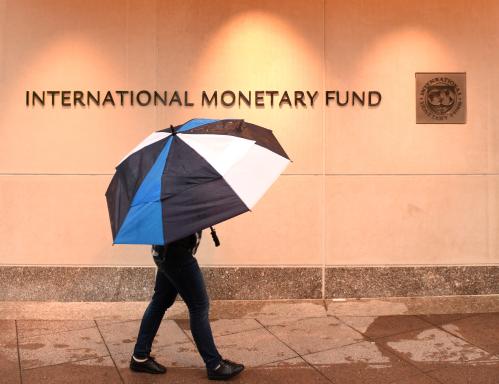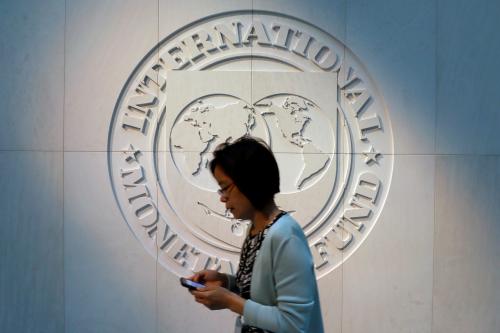Earlier this month, Zambia announced it had finally agreed to a debt restructuring agreement with private bondholders, more than three years after it defaulted. The deal represents a significant step toward Zambia’s regaining economic sustainability. It also represents an important step in the implementation of the G20’s Common Framework for Debt Relief—an attempt to integrate China, the world’s largest bilateral official lender to developing countries—into the workings of the Paris Club, which had long represented the interests of the world’s advanced economies in debt relief talks. But the Zambia experience took far longer than expected and raises concerns for other countries seeking debt relief. Those concerns rest on the unanswered question of how to treat private capital, and whether the United States and its G7 allies have yet settled on whether private investors should be encouraged as a major source of Western development finance to compete with China’s state-led model or placed at a disadvantage relative to official creditors when debtor countries cannot repay.
Sovereign debt is complicated. Unlike companies, when a country can’t pay back its debts, it cannot declare bankruptcy. And because governments borrow outside of their own markets from not only private investors (including pension funds, endowments, and retirement accounts) but also from other governments and International Financial Institutions, when things go wrong, the balancing of interests can be geopolitically and financially complex.
Following the widespread introduction of collective action clauses in 2012, a balance was largely struck between the Paris Club and bondholder creditor committees representing private investors. Operating under a well-established set of principles, and working closely with the International Monetary Fund (IMF), sovereign debt restructuring efforts were generally deemed to be working well. Central to these principles was the concept of “comparable treatment” between official and private creditors. The Zambia experience now raises fears that comparable treatment under the Common Framework is no longer comparable and that private investors are expected to absorb considerably worse terms than their official creditor counterparts, including Chinese state banks.
Comparability of treatment is difficult to implement. Bilateral government-to-government lending is often motivated by a range of different considerations, rather than the more straightforward financial motivations that drive market investors. For decades, the Paris Club and bondholders understood that comparability of treatment was a principle to be applied holistically. But in Zambia’s case, that understanding fell apart, as China insisted on a rigid rules-based approach that delayed the process.
In drafting the Common Framework, G20 members included the requirement for comparable treatment, but only among official bilateral creditors themselves. Private creditors were not explicitly entitled to comparability. Instead, the Common Framework demands that private investors provide relief “at least as favorable” as that of official creditors. In Zambia’s case, China appears to have interpreted that as “explicitly more favorable.” It has been reported that, in order to coax China to agree, Chinese authorities were assured that private creditors would, in fact, be treated worse. By some accounts, much worse.
How much worse was determined by the official creditors themselves, who, after defining the financing parameters themselves, without the input of private creditors, then flexibly applied multiple criteria in which official creditors effectively double count some measures while undercounting the one that only private creditors were willing to accept. Official creditors prefer to extend maturities and reduce coupons, rather than deal with the political and budgetary consequences of actually having to take a loss on principal. So private creditors are left with no choice but to bear the burden of up-front losses from principal write-offs. All that should be evened out in a net present value (NPV) calculation, allowing comparability to be more easily determined.
But that is not how comparability under the Common Framework is applied. Despite arguments from, inter alia, the World Bank, where a recent paper notes that by complicating the NPV method with other criteria the current system “does not distribute the burden of debt reduction equally among creditors,” the Common Framework allows official creditors to balance several criteria, but not explicitly losses on principal. To make matters worse, official creditors denied private creditors visibility about the deal they themselves had struck. While private creditors immediately published the details of their proposed terms, similar details have still not been made available by official creditors, almost a year since their agreement was reached.
So, despite some critics’ claims that bondholders often receive better terms than governments, in fact, the opposite is true. This is the erroneous premise behind the current effort to modify New York state law on sovereign debt (which seeks to protect vulnerable debtor countries from what is seen as private creditor avarice, but blindly ignores China and other official creditors’ much more troubling role in determining these countries’ economic future). It was also presumably behind the IMF managing director’s recent remarks in Ghana, where she was reported to have warned Ghana to resist bondholders’ efforts to “twist your arm” to avoid a similar fate to Zambia’s. Those comments were misplaced, given that there was widespread acknowledgment that in the case of Zambia, it was China’s insistence on ensuring private creditors got a deal China deemed acceptable, that was actually responsible for the delay.
In recent decades, Chinese lenders have emerged as the world’s largest official bilateral creditors to low-income and emerging market countries, building up strategic and economic influence in the Global South. It was only under President Joe Biden’s leadership that the United States and its G7 allies belatedly recognized the strategic, political, and economic risks of allowing developing countries to become overly reliant on (and beholden to) China. In 2023, the G7 announced the creation of the Partnership for Global Infrastructure and Investment (PGII)—a collaborative effort by G7 countries to fund infrastructure projects in developing nations. Recognizing that the G7 lacked public funds to compete with China’s state-centric model, PGII was explicitly designed to leverage and catalyze private capital to provide countries with alternatives to China. PGII is based on the premise that, in a capitalist economic system, it is private investors that present the best source of capital by which the West can provide funds, while also advancing higher standards of disclosure, transparency, and accountability.
But to encourage private capital to flow to emerging and low-income countries under PGII, the G7 should not disadvantage private capital under the Common Framework. Investors should be encouraged to undertake the risks inherent in investing in the Global South, where Chinese lenders currently dominate. And if those investments turn sour, losses should be distributed fairly among creditors. Without that assurance, the risk is that those investments won’t be made, or will be made on terms more costly to the borrowing country.
The inclusion of China in the Common Framework was a necessary and positive step. It would be impossible to conclude the debt restructuring talks with debtor nations without working closely with their largest official bilateral creditor. But China’s bias is understandably to protect its own interests, which may be inconsistent with those of G7 countries’ private capital, and of the borrowing countries themselves.
This month, the IMF will convene its next meeting of the Global Sovereign Debt Roundtable. At those meetings, the United States and other G7 participants should prioritize ensuring that in future sovereign debt restructuring cases private capital is treated comparably with other creditors. Private capital is central to how capitalist economic systems function. Leveraging that capital is the only real alternative for the G7 to deliver at scale and is often the only option for countries seeking alternatives to China. The PGII’s stated goal is to mobilize the private sector as a driver of quality global investment. And yet the Common Framework is being applied to disadvantage the private sector. The United States and the G7 need to recognize that, in the bigger context of development finance, private capital is a key part of the solution to the problem, not the problem itself.







Commentary
Private capital is the G7’s best tool to compete with China
April 15, 2024